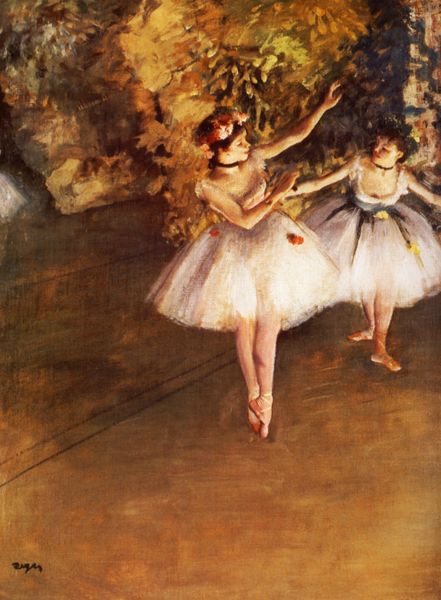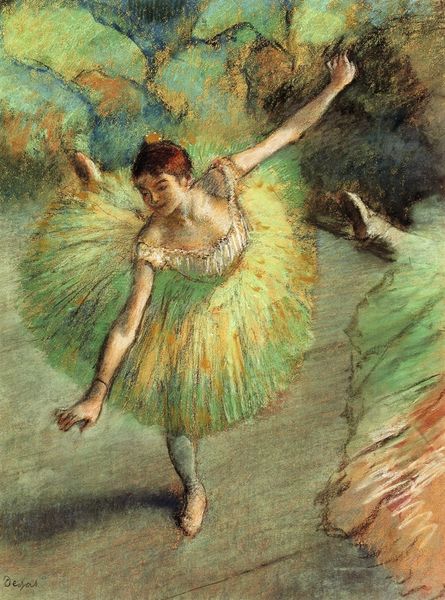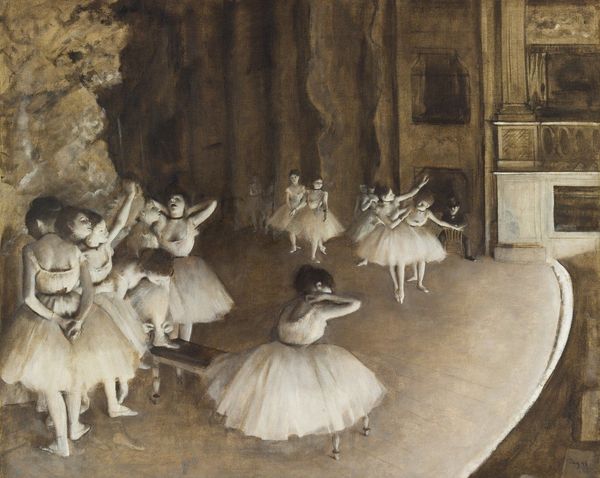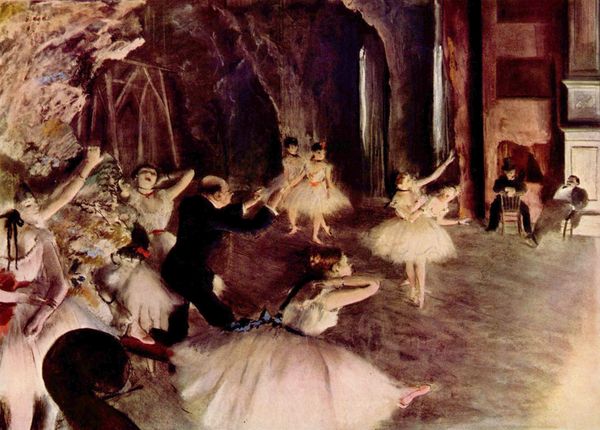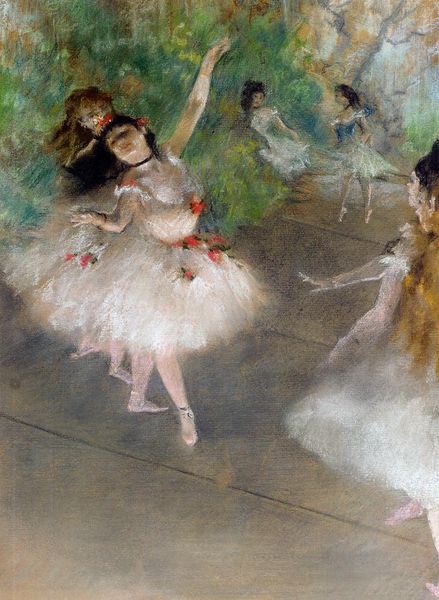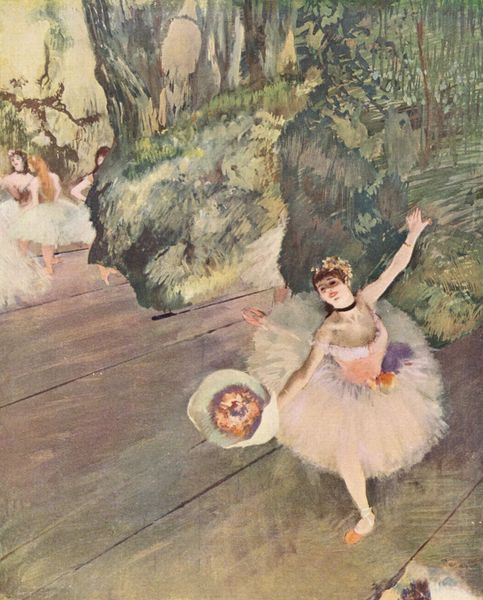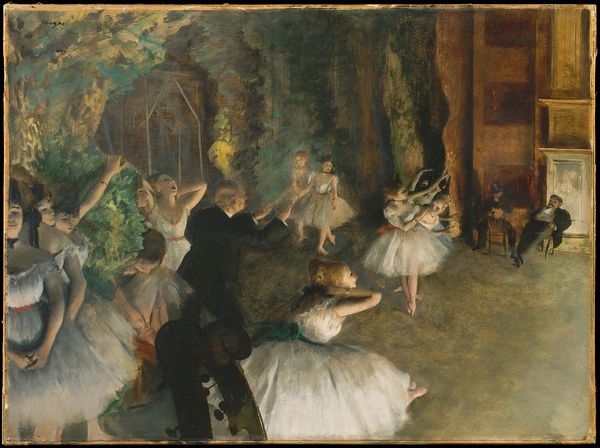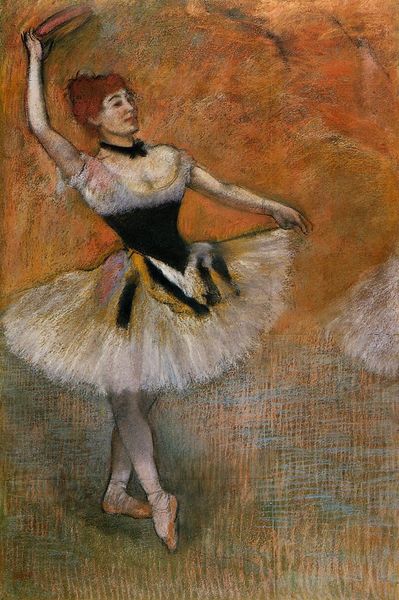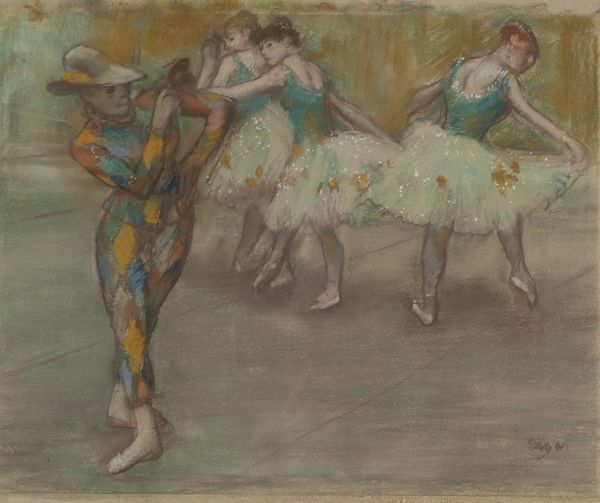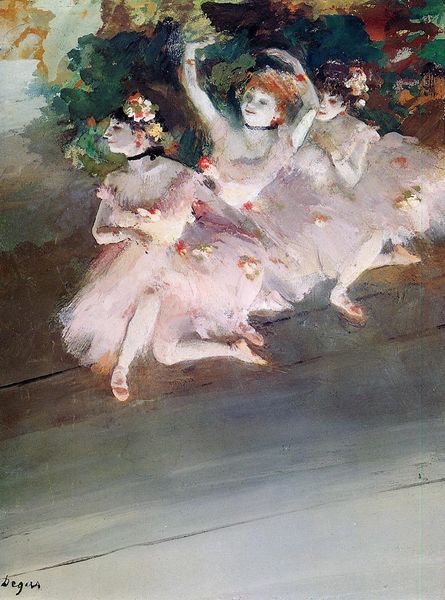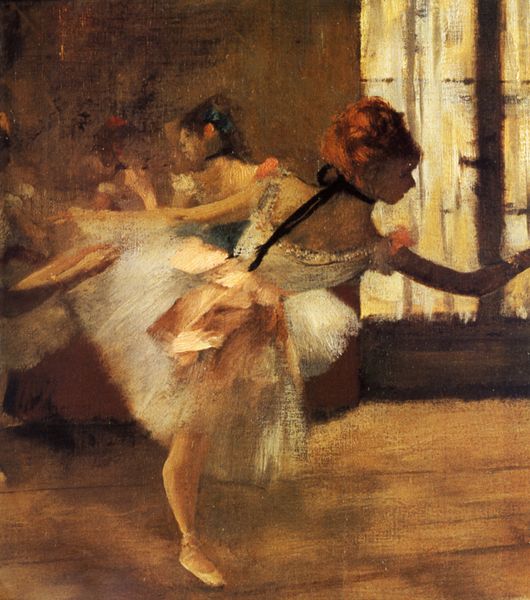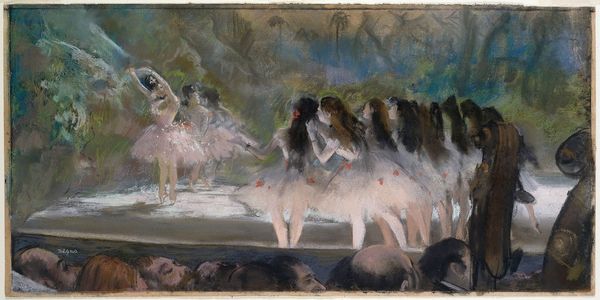
painting, oil-paint
#
figurative
#
allegory
#
painting
#
oil-paint
#
landscape
#
figuration
#
oil painting
#
romanticism
#
genre-painting
#
watercolor
Copyright: Public Domain: Artvee
Curator: The work before us, entitled "Ballerinas", is a captivating oil painting by Jules Chéret. It possesses a dreamlike quality, doesn’t it? Editor: It certainly does. There’s an ethereal lightness, like figures captured mid-reverie rather than a formal stage performance. I see it through the lens of performative expectations of women in late 19th century Europe. Curator: Absolutely. The artist presents an idealised version of ballet. Notice the incorporation of cherubs and the pastel shades, constructing a scene reminiscent of classical allegories of grace and beauty. But these portrayals were almost always crafted within very specific power dynamics of the period. Editor: Exactly. Ballet became codified with institutions such as the Académie Royale de Danse. Who controlled these institutions? What class of women were allowed, or encouraged, to become ballerinas? Where does the male gaze of the aristocracy or bourgeois classes feature in all of this? These details dictate what we see on this canvas. Curator: A vital point. By examining such artistic patronage, we discern the structures enabling cultural expressions – who gets to create and consume them. I wonder about the dancers themselves, within the framework of gendered expectations for women. Editor: Considering those constraints clarifies Chéret's contribution within societal hierarchies of the time, and prompts the question—how much autonomy, let's say, could the "ballerinas" have exerted within their artistic labour? The landscape depicted adds an outdoor pastoral sensibility; does it serve to remove the dancers from constraints imposed indoors or merely relocate them for similar control mechanisms? Curator: The romanticized environment blurs distinctions. Looking at these figures of ballet now invites us to examine dance’s historic relationship with themes of power, class, and control over women’s bodies. Editor: Precisely, questioning its aesthetic choices in relationship to those historic contexts uncovers how it reinforces – or potentially contests - prevailing societal ideals, making for relevant dialogues for us today. Curator: So, Chéret’s dreamlike vision inspires scrutiny as to how representations, even seemingly innocuous ones, can reflect deeper societal structures. Editor: In that sense, analyzing "Ballerinas" serves as a lens to deconstruct representations, hopefully allowing the viewer some degree of self-reflection concerning historical power structures and its implications within today's socio-political realities.
Comments
No comments
Be the first to comment and join the conversation on the ultimate creative platform.

